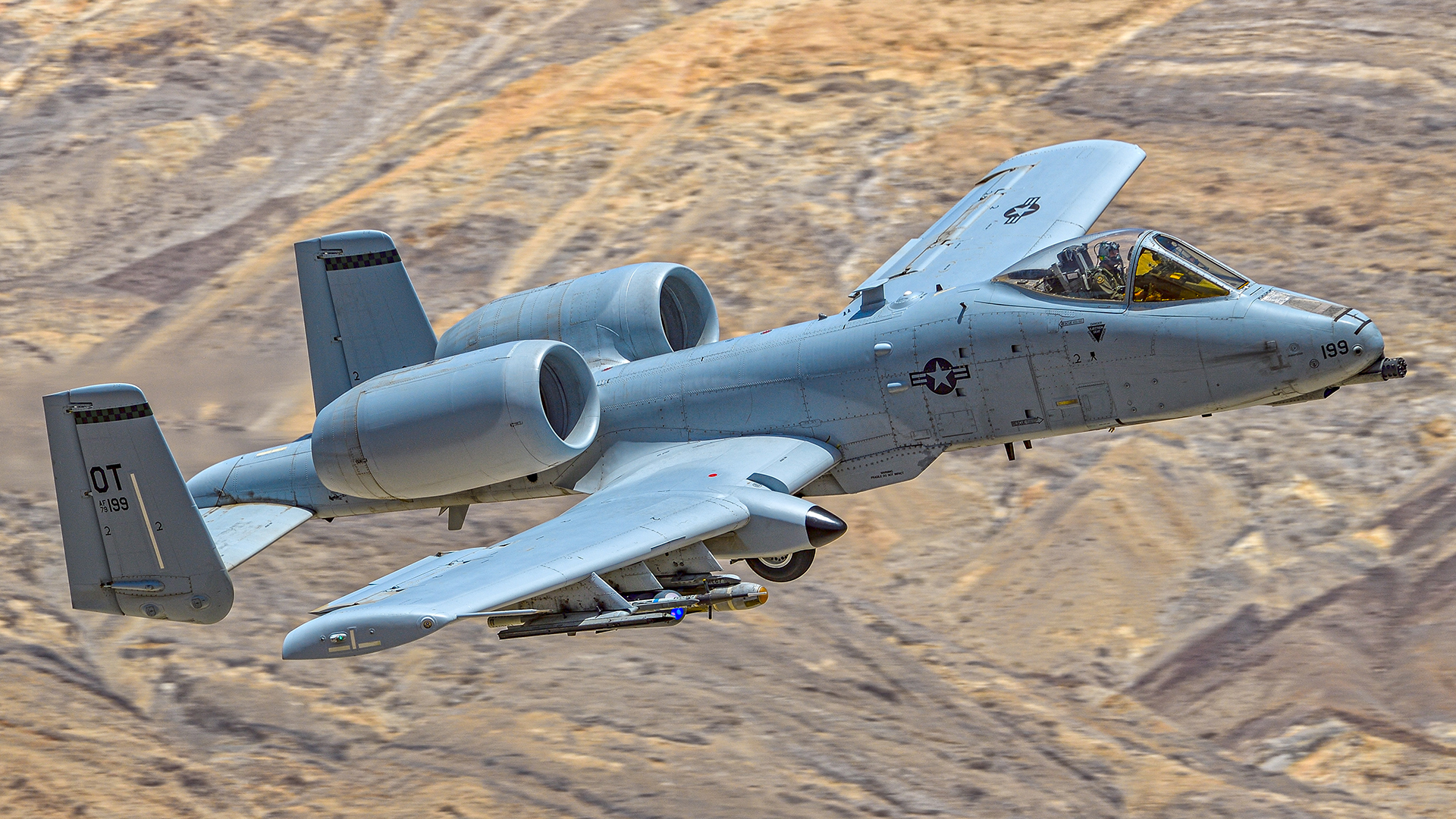
The U.S. Air Force’s greatest minds in the A-10 Thunderbolt II community are combining efforts in order to keep this tank-busting icon relevant for future high-end conflicts. The current work involves a number of different efforts including the integration of new stores and weapons, as well as the development of tactics to enable the A-10 to support modern fifth-generation fighters such as the F-35 during combat in high-threat situations.
“The big effort we are pushing for in the A-10 today is quick and simple modernization efforts to help the Air Force better posture to fight tomorrow,” says Maj. Kyle “Metric” Adkison, A-10 Division Commander at the 422nd Test and Evaluation Squadron, at Nellis Air Force Base, Nevada. “As long as the A-10 is in service, we want to develop it to help the Air Force successfully fight however we can. Today that means supporting fifth-gen fighters.” Proponents such as Adkison are keen to emphasize that the A-10 is much more than just an airframe and a 30mm gun. “It has 10 weapons stations, a very long loiter time, and a significant and robust austere capability to operate from highways and dirt strips, plus it doesn’t need lots of support infrastructure — so the overhead for us to affect the battlespace is low. Essentially, we can carry a lot of things that will help others achieve their desired effects.”
Editor’s Note: Welcome to Inside Nellis Week day two at The War Zone! Each day this week we will have a major feature on the aircraft, tactics, munitions, and people that are leading the world in air combat training and development.
“The whole thing started when General Charles “CQ” Brown took over as the USAF Chief of Staff and put out his “accelerate, change, or lose” memo that said we need to start looking at problems from a different mindset,” explains Maj. Mason “Pinch” Vincent, an A-10 instructor pilot with the USAF Weapons School’s 66th Weapons Squadron. “People assumed it wasn’t really an A-10 mission. We were doing constant deployments, guys were always in Iraq, or Syria, or Afghanistan, or flying out of Turkey, doing all that stuff, so we didn’t really have time to take a look inwards and figure out how we contribute to this high-end peer fight outside of the close air support [CAS] world that we typically have trained to do.”
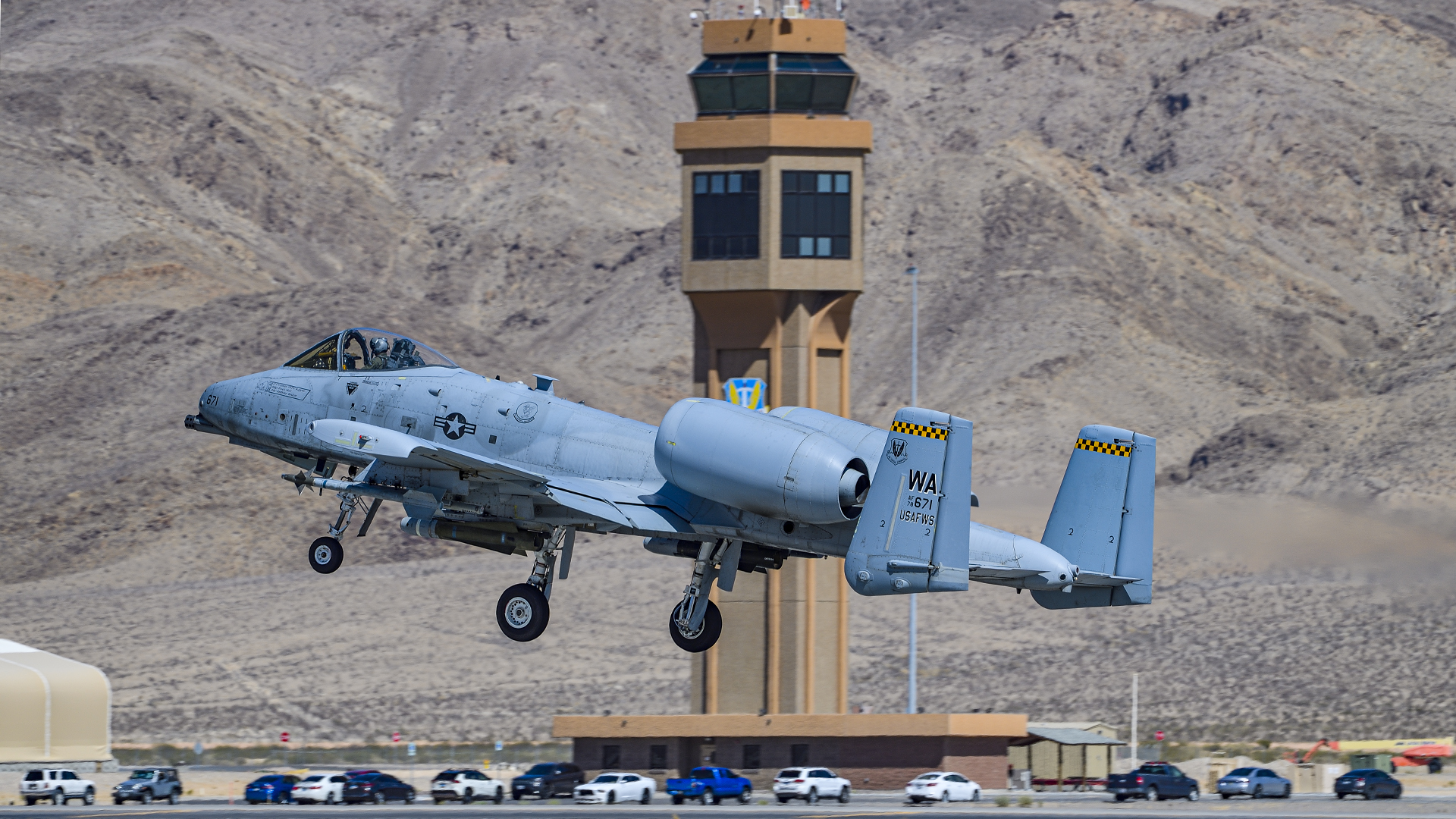
“We got a bit of a break and [got] the right guys in the room and started spitballing what it could look like. We are fortunate to be at Nellis where we can just walk across the street and talk to everybody from different platforms that are going to be executing these missions, and ask what do you need to help? One of the things that we found that you’re always going to need more of is standoff weapons, and the A-10 it turns out is a pretty good candidate to provide these because we have a lot of weapons stations and if you combine that with the agile combat operations we’ve been training to […] it made a lot of sense.”
Central to this A-10 enhancement effort is a plan for the integration of the ADM-160 Miniature Air-Launched Decoy (MALD), and the GBU-39/B Small Diameter Bomb (SDB), a 250-pound-class precision-guided bomb that can glide dozens of miles to strike its target. Testers are also looking at adding the AGM-158 Joint Air-to-Surface Standoff Missile (JASSM) further down the road. “No one wants to spend billions of dollars on the A-10,” Vincent explains, “but if we can find ways to add capability and make platforms more survivable and more effective, then we are going to do this the best we can.”
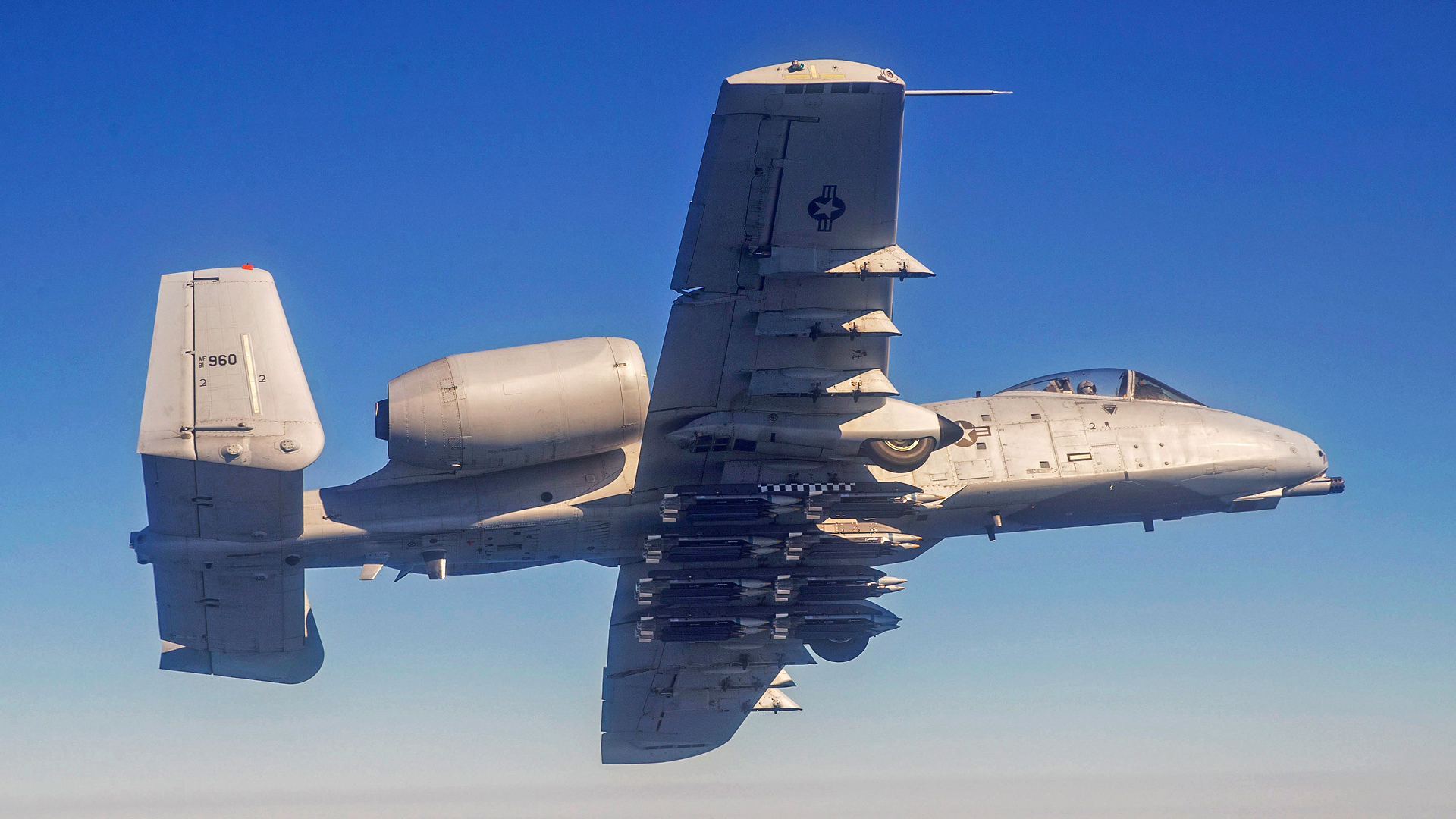
“We didn’t want to look for anything that was brand new or was going to need people to spend money, time, or effort on something that was specific to the A-10, and we didn’t want to look at anything that had a long time horizon, because [we] don’t know what the future of the A-10 is going to look like. Something cheap, easily integrated, and has an immediate impact.”
“MALD was the easy button. It requires no software integration with the A-10, we can just hang it up, drop it, and it works. To bring it to the fight you just need lots of stations — which is what the A-10 has — we’re not limited by weight because it’s a lightweight weapon and we’ve got 10 pylons that we can hang MALD on.”
The A-10 will be able to carry up to 16 MALDs, the same quantity as the B-52, and an interesting comparison with the F-16, which can carry four. The store is designed to deceive, saturate and stimulate an enemy’s integrated air defense system (IADS). “We can launch MALD for it to perform pre-planned maneuvers.” This means the opposing force must sort through the MALD targets and try to ascertain if their presence is deception or a decoy — ultimately making the enemy targeting problem more difficult and therefore assisting the leading strike force.
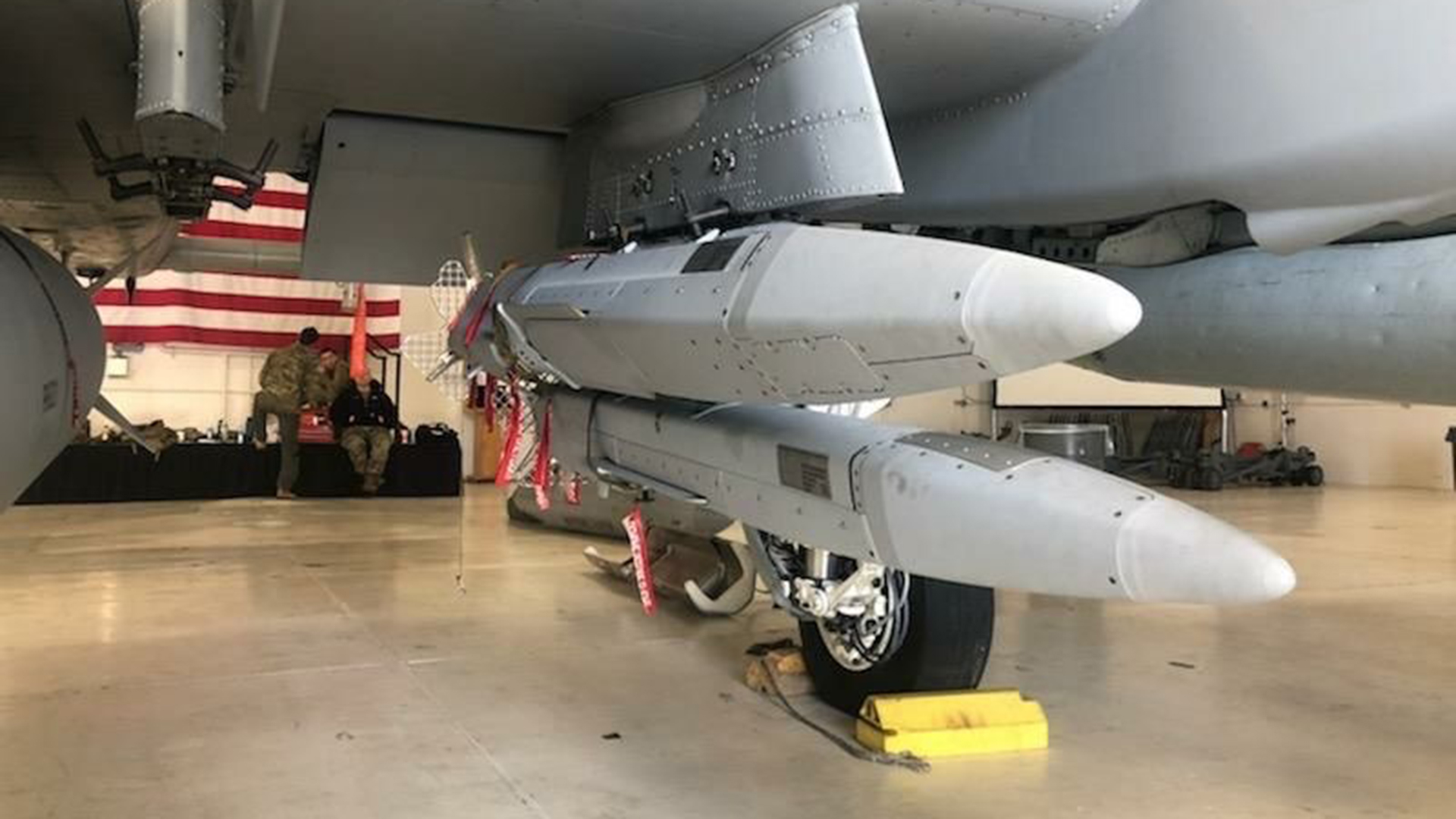
“We took it to the A-10 community first to try and get them on board with this mindset shift,” Vincent explains. “We’re not going away from the A-10’s primary missions of CAS and combat search and rescue [CSAR], but this is something we can do before those missions are viable, helping the four-plus and fifth-gen guys conduct their missions effectively. Everyone understands the nature of this peer competition, you’re going to go to war with what you’ve got and we need what we’ve got to be as capable as possible. This is one of the ways the A-10 can help.”
While the idea of adding MALD to the Warthog was born at Nellis, the Air National Guard’s 107th Fighter Squadron at Selfridge Air National Guard Base in Michigan led the initial integration effort, with the approval of the A-10 System Program Office (SPO) at Hill Air Force Base, Utah, to conduct initial fit checks. Maj. Adkison says the MALD plan has “a lot of buy-in” from the USAF community and that it is hoped it will enter flight testing in the near future.

SDB for the A-10 is further advanced and initial carriage tests have been flown in development test. The 422nd TES at Nellis should start live weapons releases this summer. Maj. Vincent says: “We can load four SDBs on each pylon, and we’ll carry between four and six of those Bomb Rack Units (BRUs) — so that’s 16 to 24 SDBs on each A-10 with stations to spare.” A four-ship of A-10s would be able to carry an eye-watering 64 SDBs! Maj. Adkison says SDB is expected to be rolled out to the fleet in 2023.
In addition to MALD and SDB, the 422nd TES is working on a host of other projects for the A-10. “We just finished a night signature evaluation to assess how easy it is to detect A-10s at night,” Adkison explains. “We have also completed some work on the AGR-20 Advanced Precision Kill Weapon System [laser-guided rockets] with assistance from BAE Systems to fully integrate these into the A-10. We initially employed them with rules of thumb, but with full integration, we got a lot more information on the specifics of the rocket and we’ve been able to increase our effective range by over 50 percent. We’ve also developed new tactics including employing the rockets against moving boats.”
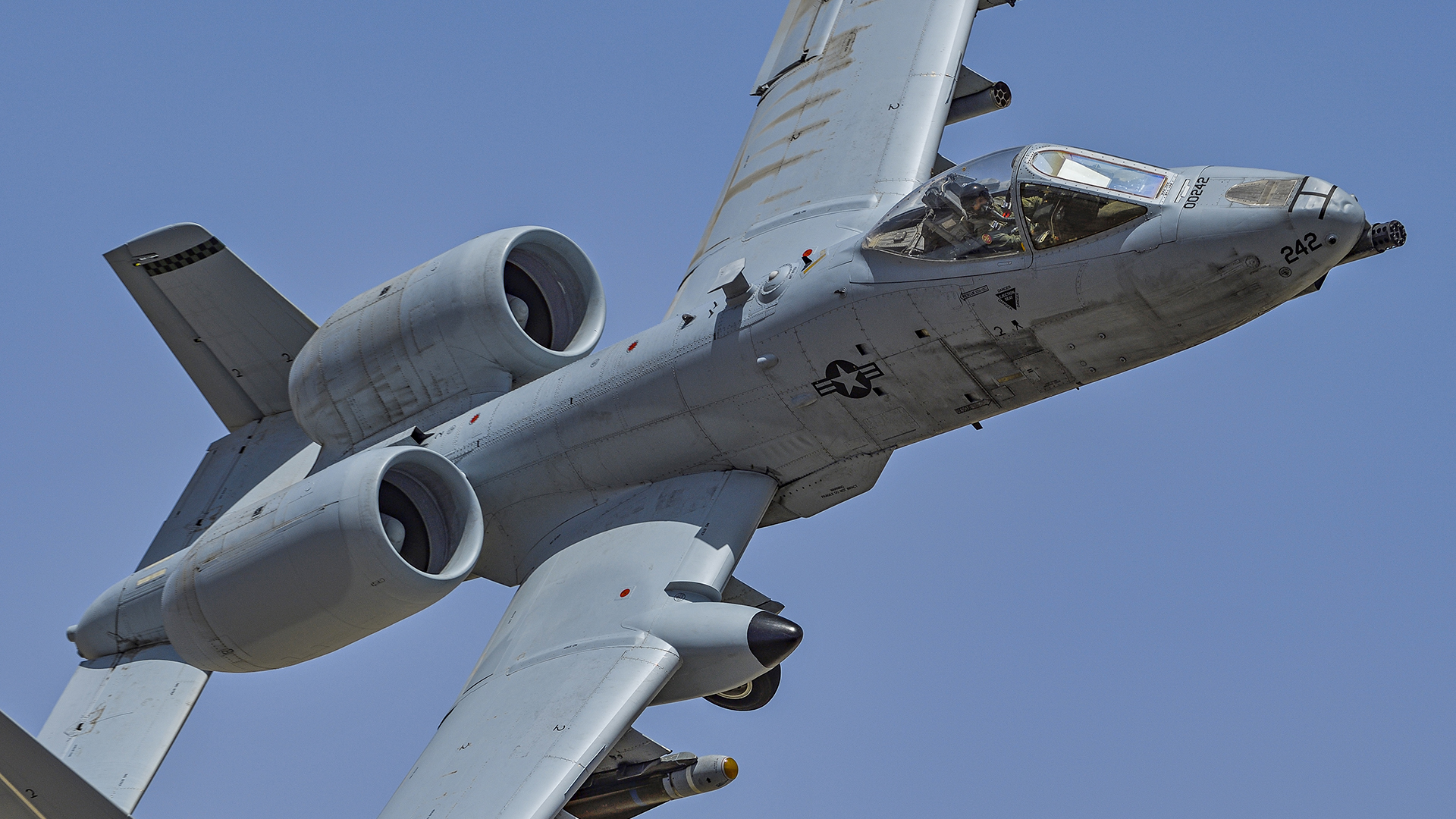
The “Green Bats” in conjunction with their guard and reserve counterparts in the Air National Guard/Air Force Reserve Command Test Center at Davis-Monthan Air Force Base in Arizona are also managing a number of other initiatives including full Link 16 datalink integration rather than via the SADL, or Situational Awareness Data Link, as well as new ARC-210 Gen 6 radios and jam-resistant GPS.
The Conversion Fuel Tank (CFT) is a modification of the A-10’s existing large ferry fuel tank that has fewer restrictions including a higher g-loading, which means it can be carried on combat missions. This will increase loiter time and reduce air refueling needs as well as increase the A-10’s already robust austere capability. In addition, the High Resolution Display System (HRDS) will provide the A-10 with a modern glass cockpit. The jet’s current multifunction displays limit the effectiveness of the Litening targeting pod in terms of image size and pixel count. HRDS will present the pilot with a far larger image from the pod.
HRDS will also enable digital maps to be modified dynamically in flight, including the use of line-of-sight plotting. “Our mission planning suite allows us to plot out threat systems and assess what we need to utilize terrain to mitigate threats,” Adkison explains. “It means we can figure out what altitude we need to fly at to avoid them. With HRDS maps we will be able to do that in real-time during the fight. It will be so valuable to be able to work out things like where you can safely hold when you are working with isolated personnel or a Joint Terminal Attack Controller (JTAC).”

Still, the most prevalent threat facing the A-10 community is the USAF itself, which repeatedly attempts to retire the Warthog from its inventory. Indeed, in 2013, the operational test force was almost completely shut down, which was then reversed when Congress overturned plans to retire the A-10.
At least for the next few years or so, the A-10’s existence appears to be safe, albeit in potentially dwindling numbers. Meanwhile, those close to the popular Warthog are working in every way possible to maintain the type’s close air support legacy and mindset while also preparing it for a high-end fight.
Contact the editor: Tyler@thedrive.com
